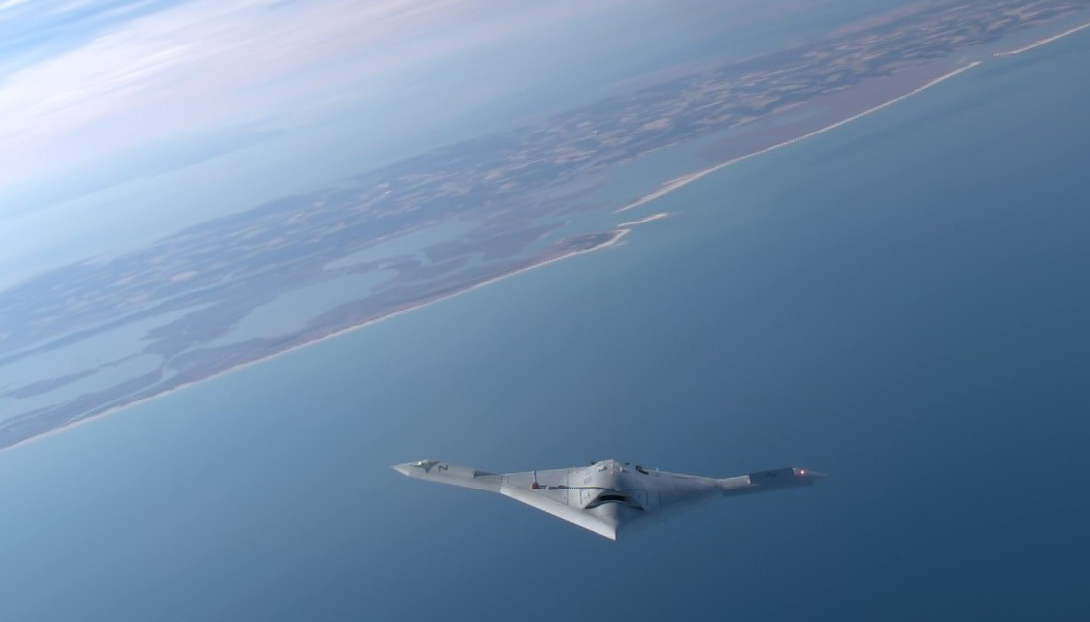
NATIONAL HARBOR, Md. — There are no plans to extend the testing for its Unmanned Carrier Air Vehicle demonstrator (UCAS-D) program after this month’s planned autonomous aerial refueling (AAR) tests, Naval Air Systems Command officials said on Tuesday.
Following the end of the testing contract the service plans to donate the two Northrop Grumman X-47B unmanned aerial vehicles — Salty Dog 501 and Salty 502 — to a museum or resign them to the Aerospace Maintenance and Regeneration Group (AMARG) at Davis Monthan Air Force Base, Ariz. — the Pentagon’s so-called aircraft “boneyard,” said Capt. B.V. Duarte, program manager of NAVAIR’s PMA-268 that oversees UCAS-D and the Navy’s planned Unmanned Carrier Launched Surveillance and Strike (UCLASS) programs.
Despite call in Congress to extend testing on the Northrop platforms, Duarte said not only had the Navy completed the testing plan for the X-47s but also the costs to reconfigure the Salty Dogs to behave more like the Navy’s preferred option for UCLASS would be prohibitive.
“From a X-47 perspective, I don’t see the tie, necessarily,” he told USNI News following the briefing.
“Given the differences between the X-47 and the UCLASS and the amount of money it would take to make it a more useful risk reduction platform” it would be cost prohibitive.
NAVAIR said the scope of the planned testing included the catapult launch and arrested recovery aboard a Navy aircraft carrier — both which occurred on the USS George H.W. Bush (CVN-77) in 2013 — as well as an autonomous aerial refueling test.
Following Salty Dog 502’s successful trap on Bush, NAVAIR had planned to retire the X-47Bs and continue the AAR tests with a surrogate aircraft. However Navy leadership weighed in and recommended extending the testing schedule eventually resulting in a $64 million contract award to Northrop to continue AAR testing in June.
The 2013 scenario is set to repeat itself following the expiration of the AAR contract — likely at the end of this month.
Last month, Senate Armed Services Committee chair Sen. John McCain (R-Ariz.) issued a strongly worded letter to Secretary of Defense Ash Carter on the UCLASS program and encouraged Carter to keep flying the UCAS-D airframes.
“Our nation has made a sizeable investment in this demonstration program to date, and both air vehicles have consumed only a small fraction of their approved flying hours,” wrote McCain.
Following the test program “there will be no unmanned air vehicles operating from carrier decks for several years. I think this would be a lost learning opportunity in what promises to be a critical area for sustaining the long-term operational and strategic relevance of the aircraft carrier.”
Duarte said the two X-47s had expended about 20 percent of the approved flight hours for the airframe but reiterated the difference in X-47B and the Navy’s current UCLASS concept would make further testing an expensive proposition.
However, the final form of the UCLASS airframe is far from settled.
The Navy wants a highly efficient surveillance UAV that can fly for long distances, while the carrier is at rest and doesn’t have the capability to be aerially refueled.
Another group, including McCain and Rep Randy Forbes (R–Va.), want a UCLASS to serve as a long range stealthy strike platform that would gain range by refueling mid-air.
The final disposition of UCLASS will follow the results of an ongoing Pentagon-wide
UAV strategic program review (SPR, pronounced spear), pushing the request for proposal for the UCLASS airframe into Fiscal Year 2016 the Navy announced as part of its FY 2016 budget rollout.
The Navy plans to field UCLASS by 2022 or 2023.
As for Salty Dog 502 — the X-47B plumbed for aerial refueling— Duarte said the first successful AAR test could occur ‘as soon as tomorrow’ off the coast of Maryland — weather permitting.





